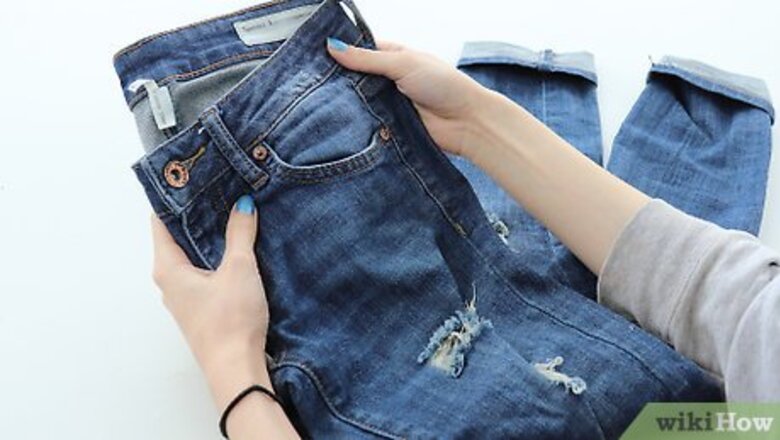
views
Planning to Turn Jeans Into Shorts

Choose a pair of jeans to turn into shorts. The best jeans to choose will fit you comfortably in the hips, butt and thighs. Remember that baggy jeans will become baggy shorts, and tight jeans will be tight shorts. Jeans made with stretchy material are not the best candidates to turn into shorts. They usually have pieces of rubber or plastic woven in with the fabric, and those won't look good dangling from the bottom of the shorts. You can also turn khaki fabrics into shorts. Just take a look at the tag and make sure they are 100 percent cotton, or close to it.

Pre-shrink the jeans. If you're converting a pair of jeans you've barely worn, or that have never been washed, run them through the washer and dryer before proceeding to cut them off. This will pre-shrink the jeans so they won't end up shorter than you want them to be.
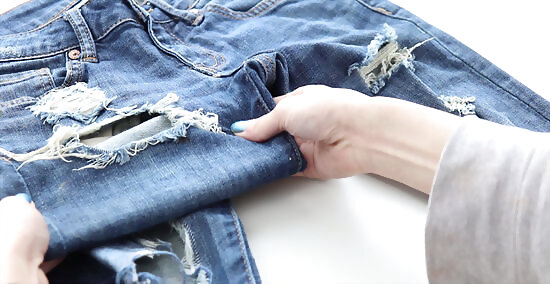
Decide what length you want the shorts to be. Depending on how loose or tight your jeans are and what shape they are in, choose from the following lengths: Capris are cut off right at the calf, and look great with heels or sandals. Capris are only a little shorter than regular pants, so this is a good choice if you don't want to make a drastic alteration. Tight fitting or "skinny" jeans look better as capris than loose-fitting jeans. You want the bottoms of the capris to hug your calves, rather than swim around them. Bermudas hit at or right above the knee. Depending on the type of jeans you're converting, bermudas can be super comfy or incredibly stylish. If you're looking for a roomy, comfortable pair of shorts you can live in all summer, convert a pair of loose-fitting jeans to bermudas. Tight-fitting jeans that hug the thighs and knees look great as bermudas, especially paired with a flowy top. Classic shorts hit 3–5 inches (7.6–12.7 cm) above the knee. This is a versatile style that can be dressed up or down. Both loose and tight-fitting jeans are great candidates for classic shorts. Classic shorts are a good length to choose if you're working with jeans that have holes or other damage below the knees. Short shorts have a hemline of about 2–3 inches (5.1–7.6 cm). These are perfect for the beach, especially paired with a cute bikini top. Tighter jeans look better converted into short shorts. With loose jeans you risk having too much upper thigh exposure. Be careful when choosing this option. If you want shorter shorts, you can always take a few more inches off, but you can't go back once you cut off too much.
Making the Cut

Put the jeans on. Use chalk or a safety pin to mark where on the jeans you plan to cut them off: at the calves, knees, mid-thighs, or upper thighs. Remove the jeans once you've marked the spot. Remember that the jeans will get shorter as they fray. If you want a line of fringe, the spot you mark should be about an inch below the length you want the finished shorts to be. If you don't want fringe, mark a spot about 1/2 an inch below your desired final length. If you plan to cuff the shorts, or fold them over a few times, mark a spot at least three inches below your desired final length.

Lay the jeans on a flat surface. A table or desk would be preferable, since it is waist-high, but if you don't have a large enough surface you can lay them on the floor.
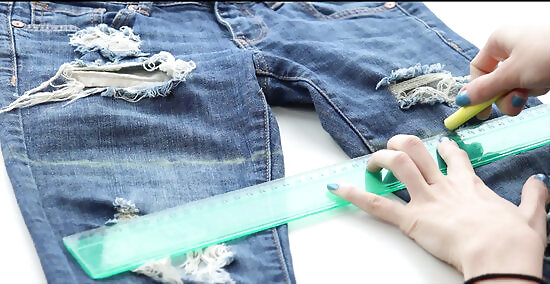
Align a ruler with the cut off mark that you made. Tilt it slightly up toward the outer part of the jeans. Lightly trace the cutting path with chalk. Repeat with the other leg. The cutting paths should come to a slight point below the crotch, forming a "v" shape. This results in a more flattering final look than simply cutting the jeans straight across. Don't pronounce the "v" too much; it should be quite subtle, unless you want the shorts to look shorter toward the thighs.

Cut the shorts. Carefully cut in a straight line along the path you traced. To get the best results, use fabric scissors, which are designed to cut through heavy fabrics like denim. Don't panic if your line isn't perfectly even. When the shorts fray the little crooked parts won't be visible.

Try the shorts on. Taking into account the extra inch or few inches shorter they'll be in the end, are the approximately the length you had in mind? You might decide you actually want bermudas instead of capris. Take a look and decide before proceeding.
Finishing the Hemline

Consider hemming the shorts. If you want to prevent excess fraying, or if you prefer not to have a line of fringe around the bottom of the shorts, you'll need to hem the shorts to prevent the fabric from unweaving. Fold the edges under one-fourth of an inch and use a sewing machine to hem the shorts. If you don't have a sewing machine, fold the the edges under one-fourth of an inch and sew around the edge of the shorts by hand.
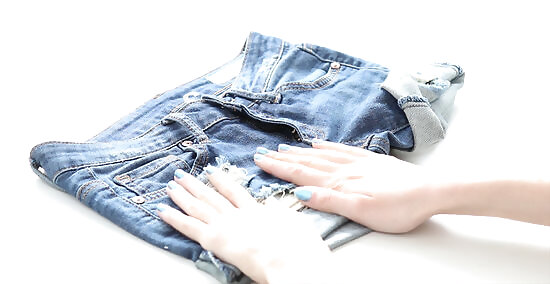
Consider cuffing the shorts. If you want to cuff the shorts, you should still stitch around the edge to prevent them from fraying too much. Use a sewing machine to stitch around the edge of both legs, or stitch them by hand. Fold the shorts up, then fold them up again to create a cuff. Use an iron to press the cuffs into place. If you want to keep the shorts permanently cuffed at the same length, you can stitch up the side of the cuffs to hold them in place.

Create a fringe. If you're going for the classic fringe look, it's time to throw your shorts in the wash. Put them through the regular wash and dry cycle to produce a nice line of fringe. If you want more fringe, repeat the wash and dry cycle. If you want to prevent the shorts from fraying too much, wash and dry until the shorts have the desired amount of fringe, then stitch around the legs right above where the fringe meets the intact denim.
Decorating the Shorts

Add some glam. Sew on beads and sequins in a pretty pattern, or use paint to decorate your shorts. You can buy sequin and bead kits at most fabric stores if you need a little help deciding what pattern to create. Fabric paint is also available at fabric stores. Use stencils to create a neat image.

Distress your shorts. Do you want your shorts to look like you've had them for years? Use sandpaper a cheese grater or steel wool to "destroy" them. Rub the tools around the pockets of the shorts and along the thighs for that "distressed" look. Rub the tools around the bottom of the shorts to create a gradual fray effect.

Make your shorts holey. Cut slits in the front of your jeans with a pair of scissors or an Exacto-knife. Customize your look as much as you want: Opt for a lot of slits or just do a few, and cut the slits at different angles or try to get them parallel. Use a scissors to cut small holes in the shorts. Gently widen the holes with your fingers. The next time you run them through the wash, the holes will have a frayed, authentic look.
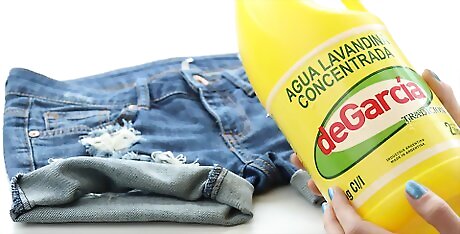
Bleach your shorts. You can make a bleach pattern to lighten certain areas or bleach your new shorts completely white. Mix two parts water and one part bleach in a plastic container. Place your pants in a dry bathtub and sprinkle the bleach solution over your pants. Concentrate the bleach in certain areas if you wish, and experiment with different patterns depending on how you spray the bleach. Once you're satisfied with the color, run the jeans under cold water and then wash them in the washing machine, alone, without detergent. Use rubber bands for more of an acid-wash or ombre effect. Simply bunch up your parts of your jeans and tie them off with rubber bands. Stick the jeans in a vat or tub filled with a bleach solution of two parts water to one part bleach. Leave there for 20-60 minutes, depending on the desired color, and wash them off under running water. Then, run them through the wash, alone, without detergent.



















Comments
0 comment